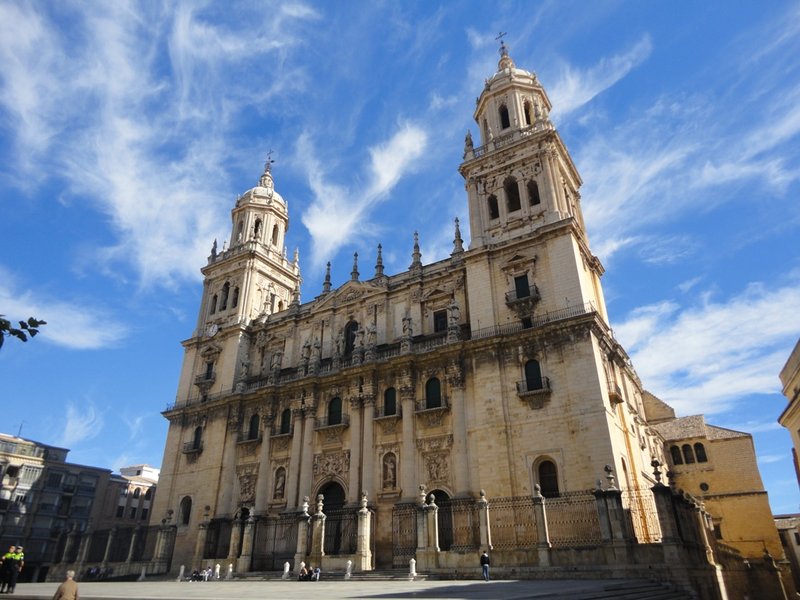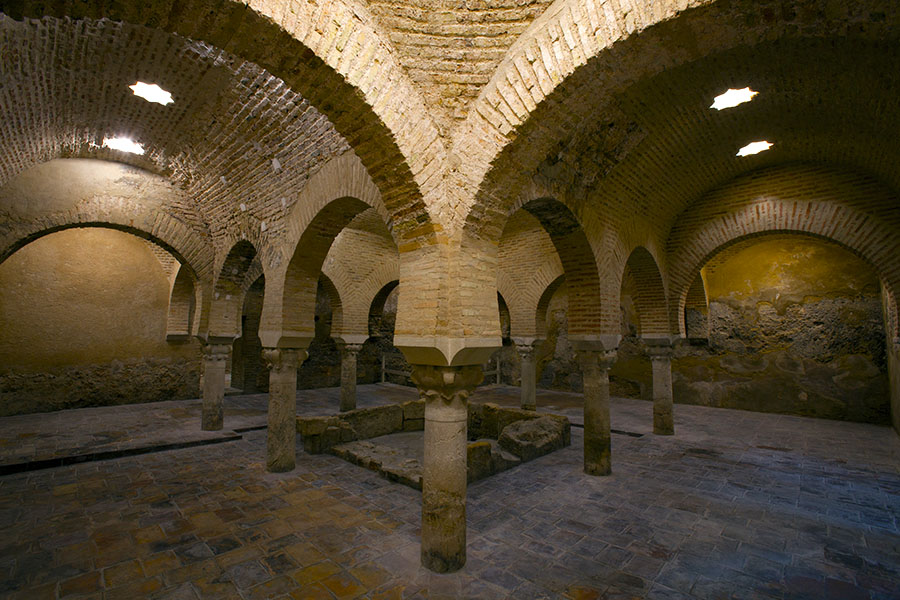Jaén

Capital of the province of the same name, Jaén holds in its streets and corners historical treasures from the coexistence of three cultures: Christian, Jewish, and Moorish. A cultural heritage has been received over the centuries through the numerous civilizations that have settled in this region: Iberians, Romans, Arabs, Jews and Christians.
Whoever strolls through the town's historic quarter sees the unique beauty of its streets, including the “Jewish quarter”; its outstanding historical churches, some built atop old mosques, such as the The Magdalena, and others including the San Juan and the basilica of San Ildefonso, of extraordinary artistic interest; or the Arabian Baths which, situated in the basement of the Villardompardo Palace, are probably the largest one can visit in Spain.
Included in the rich architectural heritage of Jaén is the Cathedral, the magnificent work of famous architect Andrés de Vandelvira and an architectural jewel of the Spanish Renaissance that served as a model for some cathedrals in Latin America. And its Castillo de Santa Catalina, overlooking and seen from anywhere in the city. Next to the Parador de Turismo (state sponsored hotel) of the same name, it provides extraordinary views of the city and the Guadalquivir valle, the Campiña plains and Sierra Sur in the distance.
But Jaén is the world capital of olive oil. Not only is the largest producer of this precious liquid gold, but its traditional cooking, always prepared with extra virgin olive oil, also features the main ingredient of Mediterranean culture. Restaurants, taverns, and small tapas bars delight the visitor with the most outstanding and exquisite Jaén-style Mediterranean cuisine.
A modern and open city today, Jaén features parcs, squares, and avenues that have managed to blend in with its traditional origins. The water that emerges from the eternal source La Magdalena, genesis of the oldest local legend, the Lizard of Jaén.
History
The first stable human settlements date from the Palaeolithic. Iberians, Carthaginians and Romans also lived here. It was called Aurigi in this period.
Scipio takes the city in the 207 B.C. The fortress is extended in this period.
It enjoyed a great splendour during the al-Andalus period. It was an important and much disputed city throughout this period in history.
The Christian conquest was led by King Fernando III in 1246, and the Bishop's seat moved here from Baeza. After the conquest, the Christians took advantage of the city's border location to raid Muslim lands. Many legends and popular songs relate these episodes.
After the fall of the Kingdom of Granada, the city loses its strategic importance. It enjoys a certain resurge from 1833 when it became the capital of the province..
Eminent citizens
Yahya al-Gazal, poet.
Ibn Faray, poet.

- Max 18
- Min 12
- Max 64
- Min 53
- °C
- °F
What territory do you want to visit?
Events




































































